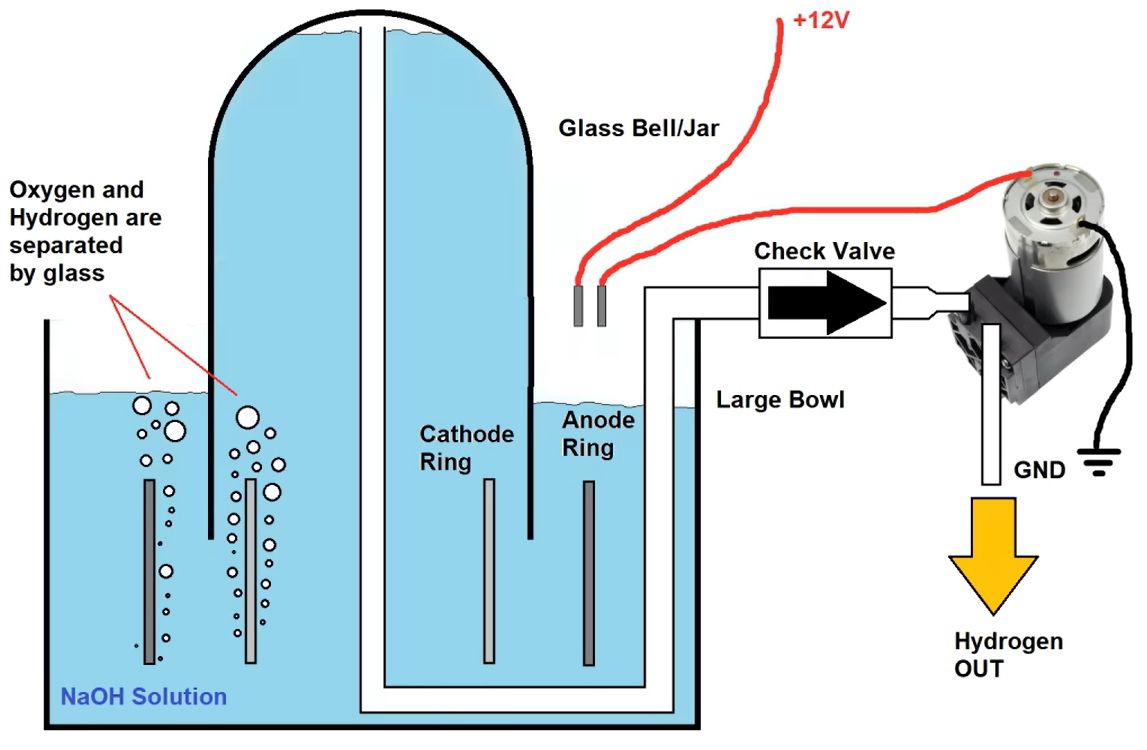How To Make A Hydrogen Generator

Emergency services are responding to a surge in reported attempts to construct homemade hydrogen generators. This follows widespread dissemination of online guides detailing the process, raising significant safety concerns.
The sudden proliferation of do-it-yourself (DIY) hydrogen generator instructions poses an immediate risk of explosions, chemical burns, and other severe injuries. Experts are urging extreme caution and strongly advising against attempting these projects without proper training and safety equipment.
The Core Components
The most common method described online involves electrolysis, using electricity to split water (H2O) into hydrogen (H2) and oxygen (O2). This requires a DC power source, electrodes, an electrolyte solution, and a container to capture the generated hydrogen gas.
Sources indicate many guides recommend using readily available materials such as baking soda, washing soda, or salt as the electrolyte. Electrodes are often fashioned from stainless steel or graphite rods.
A crucial aspect is the gas collection system, usually a closed container with an outlet to direct the hydrogen. Improper sealing can lead to gas leaks and potential explosions.
Essential Steps: The Electrolysis Process
First, prepare the electrolyte solution by dissolving the chosen chemical (e.g., baking soda) in water. This increases the water's conductivity, facilitating the electrolysis process.
Next, submerge the electrodes in the solution, ensuring they don't touch to avoid a short circuit. Connect the electrodes to the DC power source, observing the correct polarity (positive and negative).
Bubbles will form at the electrodes; hydrogen gas will be produced at the negative electrode (cathode), and oxygen gas at the positive electrode (anode). Carefully collect the hydrogen gas for storage or use.
Critical Safety Concerns
Hydrogen is highly flammable and can form explosive mixtures with air. Even small sparks or open flames can ignite a hydrogen leak, resulting in a devastating explosion.
The electrolytes used are often corrosive and can cause severe skin and eye irritation. Proper protective gear, including gloves and eye protection, is essential.
Furthermore, the electrolysis process produces both hydrogen and oxygen. Mixing these gases creates an extremely volatile mixture that can detonate with minimal provocation.
"The risks associated with untrained individuals attempting to build hydrogen generators far outweigh any potential benefits," warns Dr. Emily Carter, a leading chemical engineer.
Dr. Carter emphasizes the need for specialized knowledge and safety equipment to handle hydrogen safely. This includes proper ventilation, leak detection systems, and explosion-proof enclosures.
The rapid production of hydrogen can also create pressure buildup within the collection container. If the container is not properly vented or designed to withstand pressure, it can rupture explosively.
Reported Incidents and Warnings
Several incidents involving homemade hydrogen generators have already been reported across the country. These range from minor burns to significant explosions causing property damage.
In Ohio, a man suffered second-degree burns after a hydrogen generator he was building exploded in his garage. Similar incidents have been reported in California and Texas.
The Consumer Product Safety Commission (CPSC) has issued a formal warning against attempting to build these devices. They cite the high risk of serious injury or death.
Legal Ramifications
Depending on local regulations, constructing and operating a hydrogen generator may be subject to specific permits and safety inspections. Violations can result in fines and even criminal charges.
Furthermore, individuals who cause damage or injury due to a negligently constructed hydrogen generator may face civil lawsuits. Liability insurance may not cover damages resulting from such activities.
Consult with local authorities and legal professionals to understand the specific regulations in your area. Ignorance of the law is not a defense.
Alternatives and Responsible Practices
If hydrogen is required for research or industrial applications, consider purchasing commercially produced hydrogen from reputable suppliers. This ensures quality and safety.
Alternatively, explore safer and more sustainable energy sources such as solar, wind, or battery storage. These technologies offer viable alternatives to hydrogen for many applications.
Prioritize safety above all else. Never compromise safety for the sake of convenience or cost savings when dealing with hazardous materials or processes.
Ongoing Investigations
Law enforcement agencies are actively investigating the source and spread of online instructions for building hydrogen generators. They are working to identify and remove potentially dangerous content.
The CPSC is collaborating with social media platforms to flag and remove videos and tutorials that promote unsafe practices. They are also considering regulatory actions to restrict the sale of components used in hydrogen generators.
Public awareness campaigns are being launched to educate the public about the risks associated with homemade hydrogen generators. These campaigns emphasize the importance of safety and responsible practices.


















